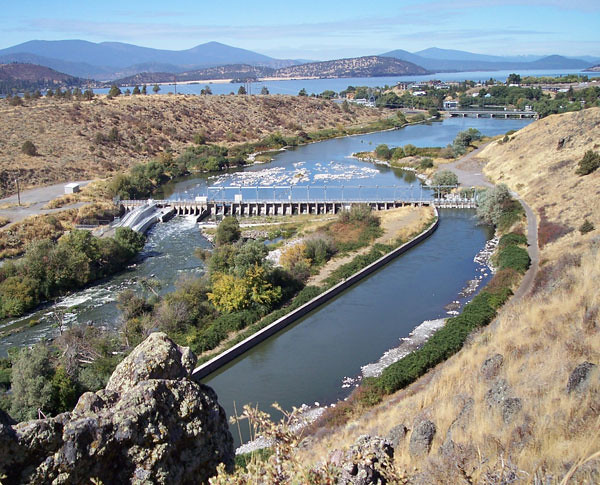
The Link River Dam at the head of Klamath River in Oregon. Removal of four dams from the Klamath river will be the largest dam removal project to date. Credits: Bureau of Reclamation (flickr)
AGU News
Press registration for Ocean Sciences 2024 is now open
Press registration for Ocean Sciences 2024 (#OSM24), held in New Orleans and online from 18-23 February 2024, is now open. [media advisory][OSM24 press center]
AGU23 Annual Meeting press registration open, program online
Press registration for #AGU23 is open and will remain open during the meeting, held in San Francisco and online 11-15 December 2023. Book hotels at the conference rate by 15 November. [AGU23 press center] [AGU23 scientific program]
Featured Research
Dam management in US rises to environmental challenges
Six decades past the era of big dam construction, a new era of dam removal hits a watershed moment, as work begins on the largest removal project to date on the Klamath River. [Water Resources Research commentary]
Biochar helps croplands absorb carbon and water in Europe
Scientists suggest that biochar, the burnt remains of biomass, could be a promising tool for removing carbon from the atmospheric cycle. A recent study examined the use of biochar in Europe’s croplands and found that it increased soil carbon, water holding capacity, and crop production. [Earth’s Future research]
China’s lakes are experiencing more algal blooms
Fertilizer and rising temperatures may be behind China’s increasing algal blooms over the past two decades, a new study finds. Algal blooms can reduce drinking water quality and threaten aquatic biodiversity. In almost 100 Chinese lakes, algal blooms are occurring earlier, more frequently, and have longer windows to form. [Water Resources Research research]
Heatwaves make it harder for urban greenery to absorb carbon dioxide
A Chicago study found urban plants could offset almost half the city’s traffic emissions, but heatwaves put a big dent in the plant’s capacity to absorb CO2 that could be partially mitigated by irrigation. [JAMES research]
Older, thicker Arctic sea ice is vanishing, export and melting are to blame
The Arctic’s multi-year sea ice is decreasing, leaving behind younger ice that is thinner and has less albedo than multi-year ice. But scientists have been unsure whether the loss was caused by export or melting. New research finds that export caused the first loss of multi-year sea ice in the 1980s, and a combination of melting and export caused the second major loss between 2006 and 2008. [JGR Oceans research]
Piecing together the roots of the ancient Australian continent
The Kimberley craton in Australia is a classic locality for kimberlite, a mantle-derived igneous rock that delivers diamonds from the mantle lithosphere to near the surface where they can be mined. A recent study analyzed the craton and revealed the thickness, geothermal gradient, and history of melt extraction or addition from each layer of the mantle lithosphere. [Geochemistry, Geophysics, Geosystems research] [Eos Editor Highlight]
AGU (www.agu.org) is a global community supporting more than half a million advocates and professionals in Earth and space sciences. Through broad and inclusive partnerships, AGU aims to advance discovery and solution science that accelerate knowledge and create solutions that are ethical, unbiased and respectful of communities and their values. Our programs include serving as a scholarly publisher, convening virtual and in-person events and providing career support. We live our values in everything we do, such as our net zero energy renovated building in Washington, D.C. and our Ethics and Equity Center, which fosters a diverse and inclusive geoscience community to ensure responsible conduct.